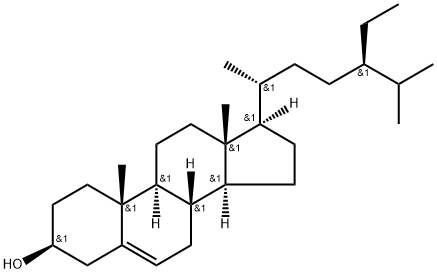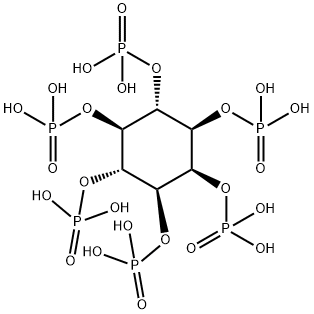Phytosphingosine
Synonym(s):D -Ribo-1,3,4-trihydroxy-2-aminooctadecane;D -Ribo-2-aminooctadecane-1,3,4-triol;4-Hydroxysphinganine;PHS
- CAS NO.:554-62-1
- Empirical Formula: C18H39NO3
- Molecular Weight: 317.51
- MDL number: MFCD02259274
- EINECS: 439-210-6
- SAFETY DATA SHEET (SDS)
- Update Date: 2024-11-20 17:10:30

What is Phytosphingosine?
Description
Phytosphingosine is a sphingolipid with a hydroxyl group at the C4 position that is found mainly in fungi and plants but also in animals, including humans. It is metabolized to odd-numbered fatty acids with 2-hydroxy palmitic acid as an intermediate. Phytosphingosine dose-dependently induces cell death of CHO cells and inhibits carbachol-induced activation of phospholipase D (PLD) in CHO cells transfected with C. elegans muscarinic acetylcholine receptors. It is essential in the heat stress response in S. cerevisiae. [Matreya, LLC. Catalog No. 1330]
Chemical properties
Off-White Solid
The Uses of Phytosphingosine
Phytosphingosine is a natural anti-microbial compound and it is involved in several cellular processes such as cell differentiation and anti-inflammation.
The Uses of Phytosphingosine
phytosphingosine is a sphingolipid that can improve the overall condition of skin and hair. Some sources site anti-microbial and anti-inflammatory properties. Research indicates similar activity to retinoic acid, in which case it may be particularly beneficial for aging and photo-aging skin.
What are the applications of Application
Phytosphingosine is a sphingolipid signaling molecule
Definition
ChEBI: Phytosphingosine is a sphingoid, an amino alcohol and a triol. It has a role as a Saccharomyces cerevisiae metabolite and a mouse metabolite. It is functionally related to a N-acyl-beta-D-galactosylphytosphingosine and a sphinganine. It is a conjugate base of a phytosphingosine(1+).
Origin
In 1884, chemist J.L.W coined the word phytosphingosine, which was taken from the term “sphingoid”, a major component in all biological membranes. There are four types of sphingoid bases and phytosphingosine is one of them. Phytosphingosine is a widely distributed natural sphingoid base and found in fungi, plants, and animals.
Flammability and Explosibility
Not classified
Veterinary Drugs and Treatments
Phytosphingosine is a unique topical antiseborrheic compound. It is in a class called ceramides which are waxy materials meant to meant to mimic the normal lipid composition of the stratum corneum. It may also have some antiinflammatory and antimicrobial properties.
References
1) Fischer et al. (2012), Antibacterial activity of sphingoid bases and fatty acids against Gram-positive and Gram-negative bacteria; Antimicrob. Agents Chemother., 56 1157 2) Fischer et al. (2013), Sphingoid bases are taken up by Escherichia coli and Staphylococcus aureus and induce ultrastructural damage; Skin Pharmacol. Physiol., 26 36
Properties of Phytosphingosine
| Melting point: | 102 °C |
| Boiling point: | 483.7±40.0 °C(Predicted) |
| Density | 0.983 |
| vapor pressure | 0.2Pa at 20℃ |
| refractive index | 9 ° (C=1, Pyridine) |
| storage temp. | −20°C |
| solubility | Soluble in Ethanol (up to 2 mg/ml). |
| pka | 11.91±0.45(Predicted) |
| form | White to off-white solid. |
| color | White |
| Water Solubility | 2.6mg/L at 20℃ |
| Stability: | Stable for 1 year from date of purchase as supplied. Solutions in ethanol may be stored at -20°C for up to 1 month. |
| InChI | InChI=1S/C18H39NO3/c1-2-3-4-5-6-7-8-9-10-11-12-13-14-17(21)18(22)16(19)15-20/h16-18,20-22H,2-15,19H2,1H3/t16-,17+,18-/m0/s1 |
Safety information for Phytosphingosine
| Signal word | Warning |
| Pictogram(s) |
 Exclamation Mark Irritant GHS07 |
| GHS Hazard Statements |
H315:Skin corrosion/irritation H319:Serious eye damage/eye irritation H335:Specific target organ toxicity, single exposure;Respiratory tract irritation |
| Precautionary Statement Codes |
P261:Avoid breathing dust/fume/gas/mist/vapours/spray. P305+P351+P338:IF IN EYES: Rinse cautiously with water for several minutes. Remove contact lenses, if present and easy to do. Continuerinsing. |
Computed Descriptors for Phytosphingosine
| InChIKey | AERBNCYCJBRYDG-KSZLIROESA-N |
| SMILES | C(O)[C@H](N)[C@H](O)[C@H](O)CCCCCCCCCCCCCC |
New Products
(S)-3-Aminobutanenitrile hydrochloride 4-Methylphenylacetic acid N-Boc-D-alaninol N-BOC-D/L-ALANINOL Tert-butyl bis(2-chloroethyl)carbamate 3-Morpholino-1-(4-nitrophenyl)-5,6-dihydropyridin- 2(1H)-one Furan-2,5-Dicarboxylic Acid Tropic acid 1-Bromo-3,5-Di-Tert-Butylbenzene S-2-CHLORO PROPIONIC ACID ETHYL ISOCYANOACETATE 2-Bromo-1,3-Bis(Dimethylamino)Trimethinium Hexafluorophosphate 4-IODO BENZOIC ACID 3-NITRO-2-METHYL ANILINE 1-(2,4-DICHLOROPHENYL) ETHANAMINE (2-Hydroxyphenyl)acetonitrile 4-Bromopyrazole 2-(Cyanocyclohexyl)acetic acid 4-methoxy-3,5-dinitropyridine 1-(4-(aminomethyl)benzyl)urea hydrochloride 2-aminopropyl benzoate hydrochloride diethyl 2-(2-((tertbutoxycarbonyl)amino) ethyl)malonate tert-butyl 4- (ureidomethyl)benzylcarbamate Ethyl-2-chloro((4-methoxyphenyl)hydrazono)acetateRelated products of tetrahydrofuran








You may like
-
 Phytosphingosine 95% CAS 554-62-1View Details
Phytosphingosine 95% CAS 554-62-1View Details
554-62-1 -
 Phytosphingosine CAS 554-62-1View Details
Phytosphingosine CAS 554-62-1View Details
554-62-1 -
 Phytosphingosine hydrochloride CAS 554-62-1View Details
Phytosphingosine hydrochloride CAS 554-62-1View Details
554-62-1 -
 1975-50-4 98%View Details
1975-50-4 98%View Details
1975-50-4 -
 2-HYDROXY BENZYL ALCOHOL 98%View Details
2-HYDROXY BENZYL ALCOHOL 98%View Details
90-01-7 -
 2-Chloro-1,3-Bis(Dimethylamino)Trimethinium Hexafluorophosphate 221615-75-4 98%View Details
2-Chloro-1,3-Bis(Dimethylamino)Trimethinium Hexafluorophosphate 221615-75-4 98%View Details
221615-75-4 -
 14714-50-2 (2-Hydroxyphenyl)acetonitrile 98+View Details
14714-50-2 (2-Hydroxyphenyl)acetonitrile 98+View Details
14714-50-2 -
 118753-70-1 98+View Details
118753-70-1 98+View Details
118753-70-1